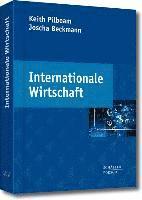International Finance Third Edition Keith Pilbeam
Posted : adminOn 4/16/2018Keith Pilbeam is Professor of International Economics and Finance at City University, London, UK. He teaches on the international programmes of Boston University and. By Keith Pilbeam Read. Finance and Financial Markets / Edition 3. International Finance is an established and internationally renowned introduction to the.

• • • • • • • • • • • • • • • • • • • • • • • • Chapter 7 - Modern Models of Exchange Rate Determination The purchasing power parity theory outlined in Chapter 6 is far from a satisfactory explanation of observed exchange rate behaviour. In particular, it is very much concerned with goods arbitrage and has nothing to say about capital movements internationally. During the post-Second World War era there has been an enormous growth of capital markets, meaning that it is possible for international investors to switch huge amounts money out of one currency into another very speedily. This being the case, speculators will tend to move their money between currencies based on the expected rate of return of being in one currency compared to another. Caetano Veloso Qualquer Coisa Rar here.
What people expect to happen to the exchange rate will be a crucial part in determining which currencies to buy and sell – if a currency is expected to depreciate, then agents will tend to switch out of that currency into currencies that they expect to appreciate. In this chapter, we look at some more recent and sophisticated exchange rate models that have been developed in an attempt to model exchange rate behaviour more successfully. Software Data Penduduk Indonesia. The common thread to the models that we analyse in this chapter is that they all emphasize the important role of relative money supplies in explaining the exchange rate. The monetary models start from the observation that the exchange rate is the price of one money in terms of another. However, the monetary models go beyond this simple observation to argue that exchange rate movements can be explained by changes in the supply and demand for national money stocks.
There are a variety of models put forward by monetarists to explain exchange rate behaviour and we deal with three of the most important versions in this chapter. The ‘flexible-price’ monetary model, the ‘sticky-price’ monetary model and the ‘real interest rate differential’ model. The monetarist exchange rate models make an assumption that domestic and foreign bonds are perfect substitutes, there developed a brand of models known as portfolio balance models that allow for differences in riskiness between domestic and foreign bonds. We shall spend some time looking at the implications of imperfect asset substitutability between domestic and foreign bonds by looking at a more general model that allows for a portfolio balance effect. Revision Questions. • What is meant by Uncovered Interest Rate Parity (UIP)?
Assume that the spot dollar pound exchange rate is $1.90/£1, the one year UK interest rate is 4% and the one year US interest rate is 7%. What is the expected dollar per pound exchange rate in one year’s time according to UIP?